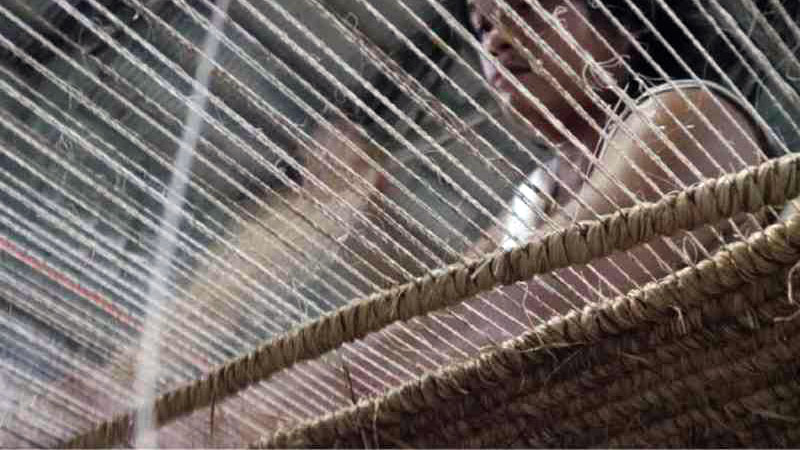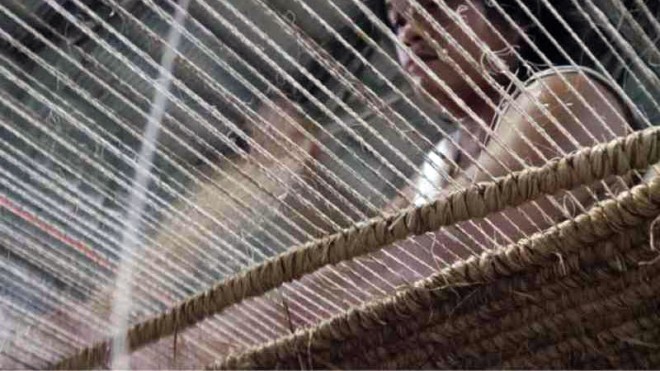
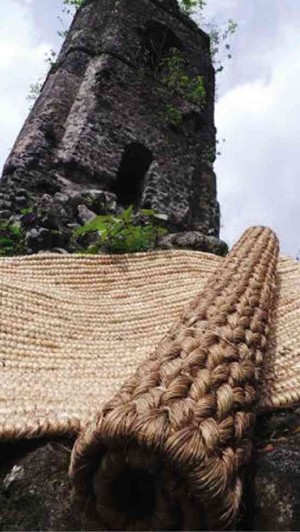
Ann Charleen “Cher” Tagle became an abaca entrepreneur through, pardon the pun, a complex weave of events. In 2009, as an employee of J. P. Morgan, the advertising graduate from Assumption jumped into the abaca business primarily to help an old friend, whose family had been active in the industry but had encountered some problems.
That friend, with whom Tagle established Charles & Aaron Design Corporation (from their high school nicknames), eventually went his own way, leaving Tagle and the veteran abaca designer they had hired, Orlando “Orly” Edralin, with a fledgling business. “I didn’t know anything!” exclaims the 30-year-old Tagle.
Then again, Tagle admits she always had an entrepreneurial streak, coupled with a strong faith that things do turn out for the best. “Even as a kid, I was already selling butong-pakwan, doing my classmates’ assignments, and renting out pocketbooks and comics to make extra money,” she says with a chuckle.
With her father’s backing, Tagle, who calls herself “administrative and finance manager and whatever else is needed,” offered Edralin partnership—and the title of chief operating officer and general manager. That, and her prodigious pushing of the company on the Internet, helped put them on the map.
The company, Charles & Aaron, makes beautiful handwoven carpets from this most genuinely Filipino of raw materials. In its factory in Sto. Domingo, Albay, Edralin manages some 40 weavers, many of whom have been working with abaca in its cradle, the Bicol region, for generations.
It is primarily an export company with international clients; most recently, Ralph Lauren International execs came to town to meet with Tagle because they liked her candid blogging on the Charles & Aaron homepage. The company is working on its accreditation with the retail and design giant. Business has gotten so good that the tandem established Weave Manila last February to handle local orders. “But we won’t be compromising any of the quality,” Tagle promises.
Unchanged for centuries
In Sto. Domingo, the weavers still use looms that have remained essentially unchanged for centuries; the factory’s LED lights are among the few concessions to modernity. The process is environmentally sound from beginning to end, using no chemicals, and with all the waste products (such as residual fiber) recycled and completely biodegradable. The consistency has won recognition; last year, Charles & Aaron received a Green Philippines Islands of Sustainability Eco Switch Planet Award for Energy Efficiency among small and medium enterprises, an award sponsored by the European Union.
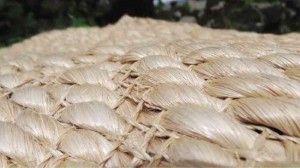
Abaca has a long and rich history in the Philippines; it was being used for clothes and slippers in the Philippines long before the Spaniards arrived. The first samples that made it to the US were known as Manila hemp, used by the US Navy because of its sturdiness and resistance to seawater. “The more you wet it, the stronger it gets,” notes Tagle. “They used Manila hemp on the Titanic!”
The material has proven so versatile, Tagle reports that German car maker BMW is considering using it for car interiors.
The abaca plant (Musa textilis) looks much like a banana tree, and is cut down to extract the fibers in its trunk. These are stripped by hand, dried and classified according to color and texture; yes, there is such a thing as grade “A” abaca. The outermost layer of the fiber is the darkest; the next layer is called honey, then tan and, finally, cream, with wheat interwoven among those layers. “Cream is the most expensive, because there isn’t much of it,” says Edralin.

After grading comes segregation, then the abaca is stored in bales before weaving begins. From the cutting of a plant to the start of weaving takes about a month and a half; it will take one person a week to weave a 3 by 7-foot carpet. Bigger pieces can take about a month, using many different patterns which Edralin helped create.
“Abaca has unique characteristics that make it different from other fibers,” says the soft-spoken Edralin, who is obviously crazy about the material. He actually studied business management and computer science, but ended up doing information systems for an abaca buying company. When his boss asked him what he really wanted to do, however, he opted for design, having been keenly interested in art and drawing all his life. Today, Tagle calls him the “brain” of the company.
“Abaca is classy, strong, shiny,” Edralin says. “Once you use it in different products, the beauty comes out even more. Jute is so coarse, while sisal has a dull color.” Like a true artist, Edralin talks about being “one with the material. When you make a design, it’s pretty impromptu. You can plan and draw, but in actual weaving, you have to see how the fiber responds. You may be looking for certain warps and wefts, but hindi naman pala kaya. You listen to the weavers, because they know.”
Motorcycles
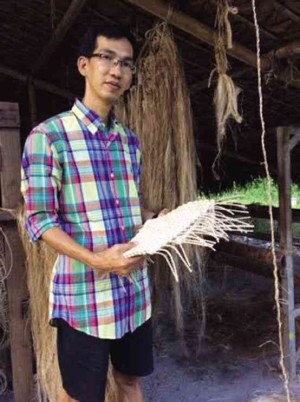
Uplifting the quality of life for these weavers is also an underlying mission of the partners. “There has been a big improvement in their lives,” Edralin says. “Now, many of them have motorcycles, which they only used to dream about. Their parents were in the same business, but now they’re taking it further.”
New weavers at Charles & Aaron have to undergo training for a month, to understand the quality control required. “We tell them we’re doing this to take care of the industry, of their industry, their future, so gawin nating maayos. Before, wala lang; when the basket is finished, tapos na, bayad na. We want to build relationships.” Weekly bible studies and monthly birthday parties are among such opportunities for bonding.
The weavers are assigned into groups, with leaders who will someday evolve into micro-suppliers and future small-scale entrepreneurs themselves, Edralin says. With the huge demand in the global market for abaca and the limited supply, Tagle is actually dreaming of growing their own raw material, but with a community-based approach—that is, getting small farmers to plant abaca on their own tracts of land to supply the company.
Tagle’s biggest lesson in all this? “You should never get tired of doing things right,” says the soon-to-be-married young businesswoman, who still goes on sales calls and answers e-mail herself. And it’s only right that she constantly pushes this beautiful indigenous material that truly has no equal in the world. As Edralin says, “There’s really something about abaca that encourages you to keep on discovering it.”
Visit www.cnadesign.com and www.weavemanila.com.

